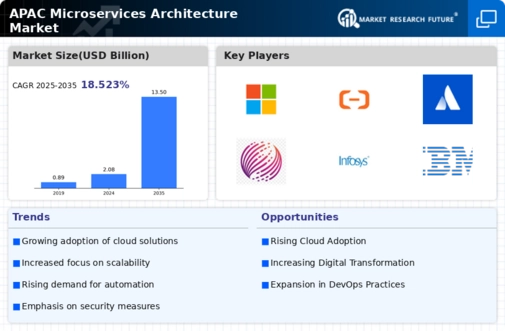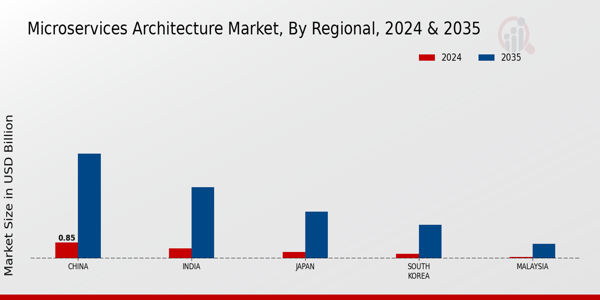The APAC Microservices Architecture Market is rapidly evolving as businesses increasingly seek flexibility, scalability, and efficiency in their IT infrastructures. Microservices architecture has emerged as a crucial framework for organizations aiming to innovate and adapt swiftly to shifting market demands. This market is characterized by a competitive landscape where numerous players are continually enhancing their offerings to meet the diverse needs of businesses across various sectors. As companies transition towards digital transformation, the demand for microservices architecture solutions is gaining momentum, creating a dynamic environment driven by both established technology providers and emerging startups.
Understanding the competitive insights of this market involves analyzing the key players' strategies, strengths, service offerings, and market positioning, which collectively contribute to the landscape of microservices in the APAC region.
Microsoft stands out in the APAC Microservices Architecture Market due to its strong presence and extensive portfolio of cloud services. The company leverages its Azure cloud platform to offer a comprehensive range of microservices-based solutions tailored for businesses in the region. Microsoft's strength lies in its robust development tools, integration capabilities, and support for multiple programming languages, which enable organizations to build, deploy, and manage applications with ease. The firm has established strategic partnerships and collaborations to enhance its service delivery in the APAC market, thus bolstering its competitive edge.
Moreover, Microsoft places a strong emphasis on security, compliance, and innovation, factors that resonate well with customers in the region, as they seek reliable and future-proof solutions.
Alibaba Cloud has emerged as a formidable player in the APAC Microservices Architecture Market, capitalizing on its deep understanding of local market dynamics and customer needs. The company offers a suite of cloud services that includes microservices governance, container orchestration, and API management, allowing enterprises to effectively manage and scale their applications. Alibaba Cloud's market presence is bolstered by its extensive infrastructure across the APAC region, ensuring high availability and performance for its customers. The company has also engaged in strategic mergers and acquisitions to enhance its technological capabilities and expand its range of cloud offerings.
Strengths include competitive pricing and a strong focus on artificial intelligence and big data analytics, positioning Alibaba Cloud as a well-rounded provider adept at meeting the demands of modern enterprises in their digital transformation journeys.
























Leave a Comment